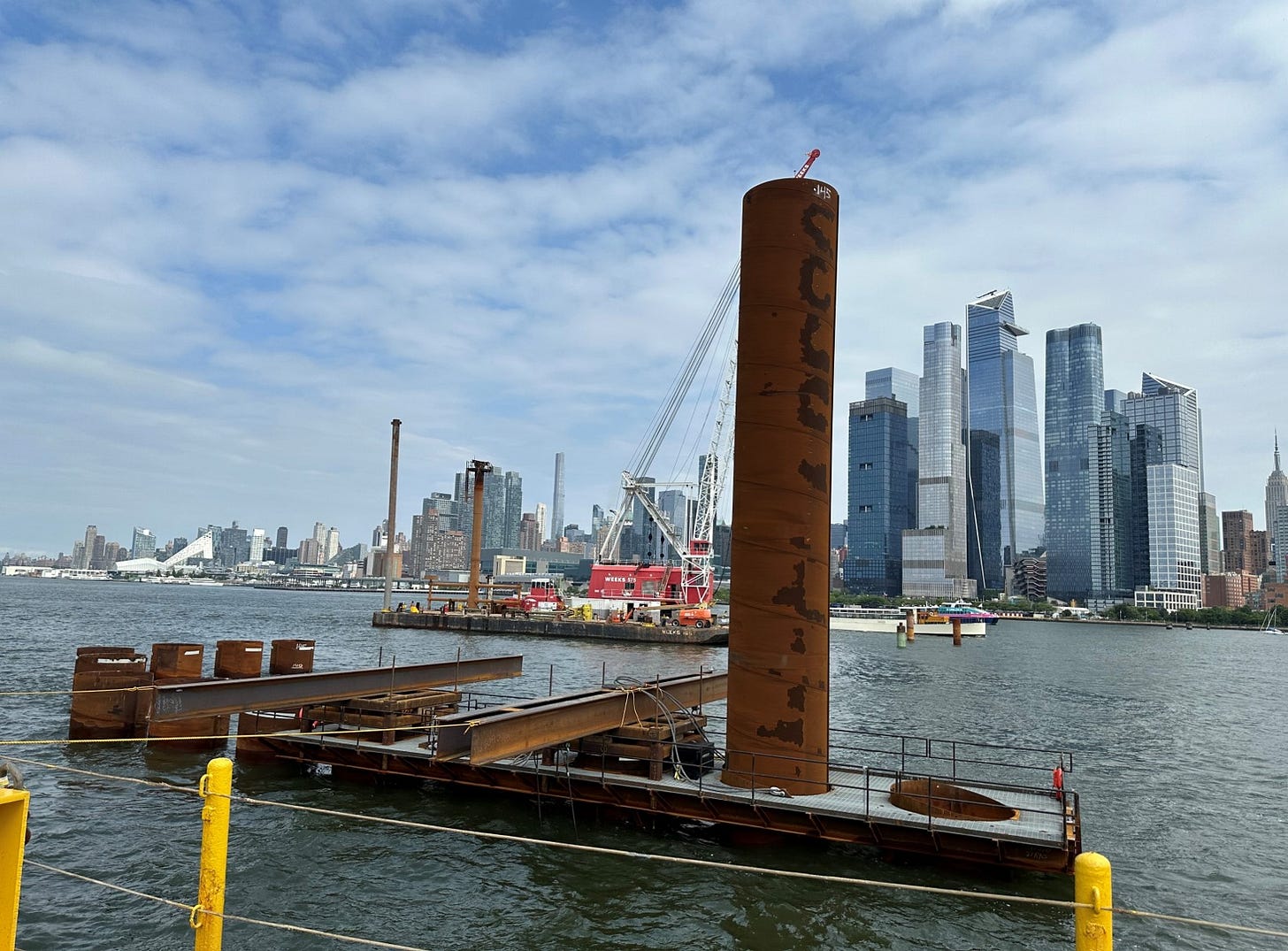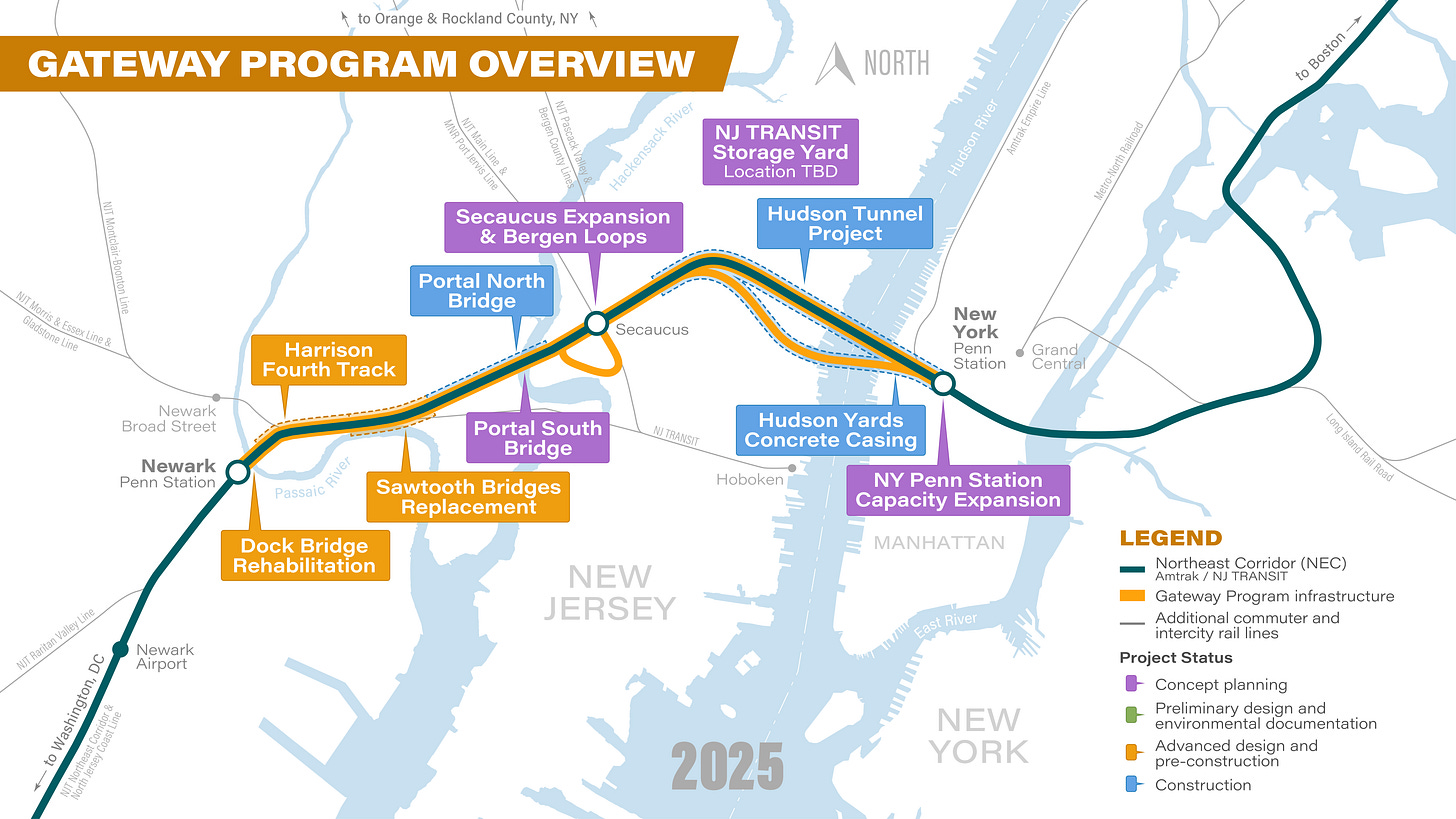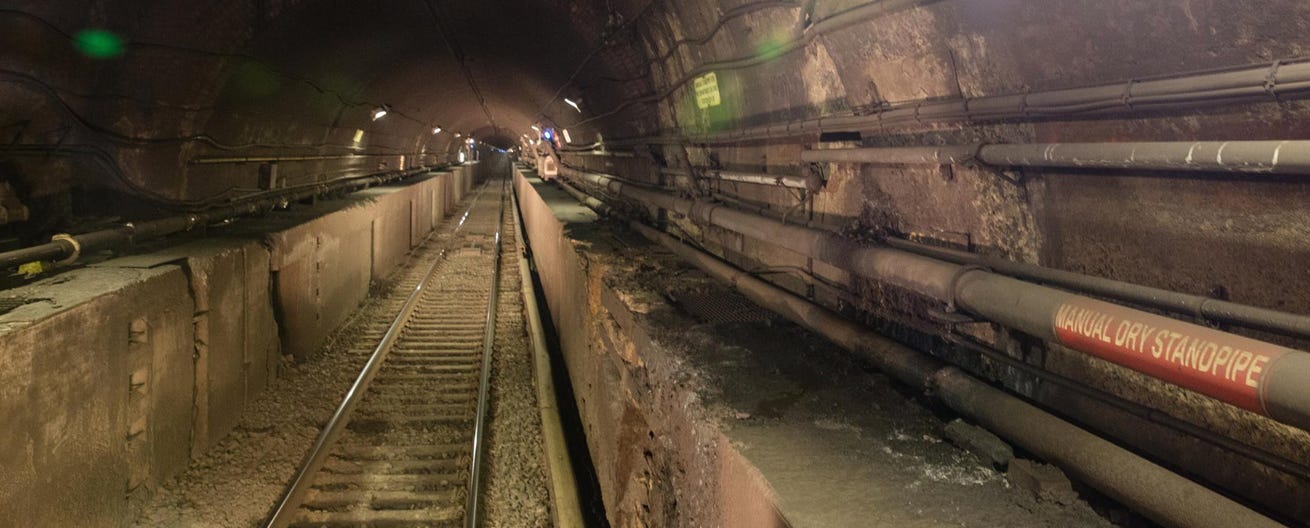“The Most Urgent Infrastructure Project in America”
How the Hudson Tunnel Project will transform rail infrastructure in America's Northeast Corridor
Hi there,
Welcome to another issue of The Off Site!
This week, we're examining one of the most critical infrastructure projects in the United States: the Hudson Tunnel Project.
This is a cornerstone of the larger Gateway Program that promises to revolutionize rail travel between New Jersey and New York City.
After decades of proposals, false starts, and political battles, this $16 billion megaproject has finally secured full federal funding and broken ground.
Let's dive in.
What is the Hudson Tunnel Project?
The Hudson Tunnel Project addresses a critical vulnerability in America's busiest rail corridor—the deteriorating, century-old North River Tunnel beneath the Hudson River.
At its core, the project consists of three major components:
New Hudson River Tunnel. This is the construction of a brand-new, two-track tunnel beneath the Hudson River connecting New Jersey to Manhattan, providing much-needed redundancy and expanded capacity.
Hudson Yards Concrete Casing. This is the completion of a concrete tunnel box beneath Manhattan's Hudson Yards development that preserves the right-of-way for the new tunnel to connect into Penn Station.
North River Tunnel Rehabilitation: Once the new tunnel is operational, a comprehensive renovation of the existing 1910-built tunnel that was severely damaged during Hurricane Sandy in 2012.
When completed, the system will feature four modern rail tubes under the Hudson River instead of the current two, doubling capacity and allowing for operational flexibility.
This will allow for continued service during maintenance and emergencies, significantly reducing the delays that currently plague the Northeast Corridor
A single point of failure
Why is it needed? The existing North River Tunnel (NRT) was completed in 1910 by the Pennsylvania Railroad. With just two single-track tubes running beneath the Hudson River, it creates what engineers call a "one-track-in, one-track-out" bottleneck serving approximately 450 Amtrak and NJ Transit trains and nearly 200,000 passengers daily.
The tunnel's vulnerabilities were exposed when Hurricane Sandy flooded it with millions of gallons of seawater in 2012. The salt water left behind corrosive chemicals that continue to degrade the tunnel's concrete liner, bench walls, and critical systems. Twelve years later, the damage manifests as increasingly frequent service disruptions.
According to the Gateway Development Commission, "When an incident takes one tube out of service, traffic in and out of Penn Station must use the one remaining tube, reducing capacity by up to 75% and leading to significant delays. The 24 trains per hour that use the NRT in peak periods could drop to as few as six when just one tube is closed."
One report estimated that the North River Tunnels and the adjacent Portal Bridge contributed to over 2,000 hours of delays between 2014 and 2018 alone.
The long path to groundbreaking
The Hudson Tunnel Project emerged in 2011 after then-New Jersey Governor Chris Christie canceled the Access to the Region's Core (ARC) project. Unlike ARC, which would have terminated at a new station beneath 34th Street, Gateway connects directly to existing Penn Station tracks.
Federal support for the project has fluctuated dramatically with changing administrations. The Obama administration designated Gateway as a critical national priority, the Trump administration reclassified it as "local," and the Biden administration reinstated it as essential infrastructure.
By July 2024, funding commitments included $12 billion in federal support and $4 billion from regional stakeholders. The Full-Funding Grant Agreement signed that month represents the largest federal investment in mass transit infrastructure in modern American history.

Engineering challenges
The project faces formidable engineering challenges, particularly in tunneling beneath the Hudson River. The riverbed on the Manhattan side has been described as having "a chocolate pudding consistency" that requires extensive stabilization before tunnel boring machines can safely pass through.
The tunnel under the Palisades in New Jersey represents another significant challenge. Before construction could begin, the project team needed to acquire easements for over 200 properties sitting above the tunnel route—even though some are as much as 250 feet above the planned tunnel alignment.
According to the Gateway Development Commission’s Chief of Public Outreach Steve Sigmund, the tunnel boring process itself requires custom machines tailored to the specific geology. "You can't use some old boring machine unless it happened to have matched up exactly with that diameter, which none ever do. You also have to have a very specific drill bit depending on what kind of rock you're going through. In this case, it's a pretty hard shale."

Work packages and major contractors
The project has been broken into distinct work packages, with seven either awarded or under active procurement.
Tonnelle Avenue Bridge and Utility Relocation: Construction began in late 2023 by Conti Civil, LLC with construction management by Naik Consulting Group; market case estimate of $47.3 million; expected completion in 2025.
Hudson Yards Concrete Casing–Section 3: Construction began November 2023; expected completion in 2026.
Hudson River Ground Stabilization: Early surveying began in May 2024 with heavy construction starting in summer 2024, led by Weeks Marine, Inc. The contract for the HRGS Project is valued at approximately $284 million, with Phase Two expected to conclude in 2027.
Palisades Tunnel Project: Schiavone Dragados Lane JV awarded $465 million contract (plus contingencies) in August 2024; expected completion in 2027.
Manhattan Tunnel Project: Frontier-Kemper-Tutor-Perini JV awarded $1.18 billion contract in February 2025; expected completion in 2029.
Hudson River Tunnel Project: This is the center portion of the new tunnel. Currently in procurement. Shortlisted ventures are:
Gateway Tunnel Contractors (Halmar International LLC and FCC Construction Inc.)
Hudson Tunnel Constructors (Dragados USA Inc., Schiavone Construction Co. LLC, and The Lane Construction Corp.)
Traylor/Walsh/Skanska JV (Traylor Bros. Inc., Walsh Construction Co. II LLC, and Skanska USA Civil Northeast Inc.).
New Jersey Surface Alignment Project: In procurement with shortlisted contractors identified; timeline pending.
Program Management: Mace-Parsons-Arcadis (MPA) joint venture selected February 2024 as delivery partner; Gateway Trans-Hudson Partnership (WSP, AECOM, STV) providing technical design and support.
Current status
Construction officially launched in November 2023 with work beginning simultaneously on both sides of the Hudson:
In North Bergen, NJ: The Tonnelle Avenue Bridge and Utility Relocation Project broke ground, providing access to the future tunnel portal and entry point for tunnel boring machines.
In Manhattan: Work commenced on the Hudson Yards Concrete Casing–Section 3, preserving the right-of-way for the tunnel to connect to Penn Station through the massive Hudson Yards development.
In the Hudson River: The Hudson River Ground Stabilization Project began fortifying sections of the riverbed to allow tunnel boring machines to safely excavate beneath.
The new tunnel is expected to be in service in 2035, with the project completed in 2038.
On the podcast this week
On the podcast this week, the team discuss the Lyon-Turin high-speed rail's timeline challenges, and the implications of a major Australian builder's collapse.
They also cover a Colorado highway dispute with $14M legal fees for a $5M victory that highlights the industry's litigious culture.




